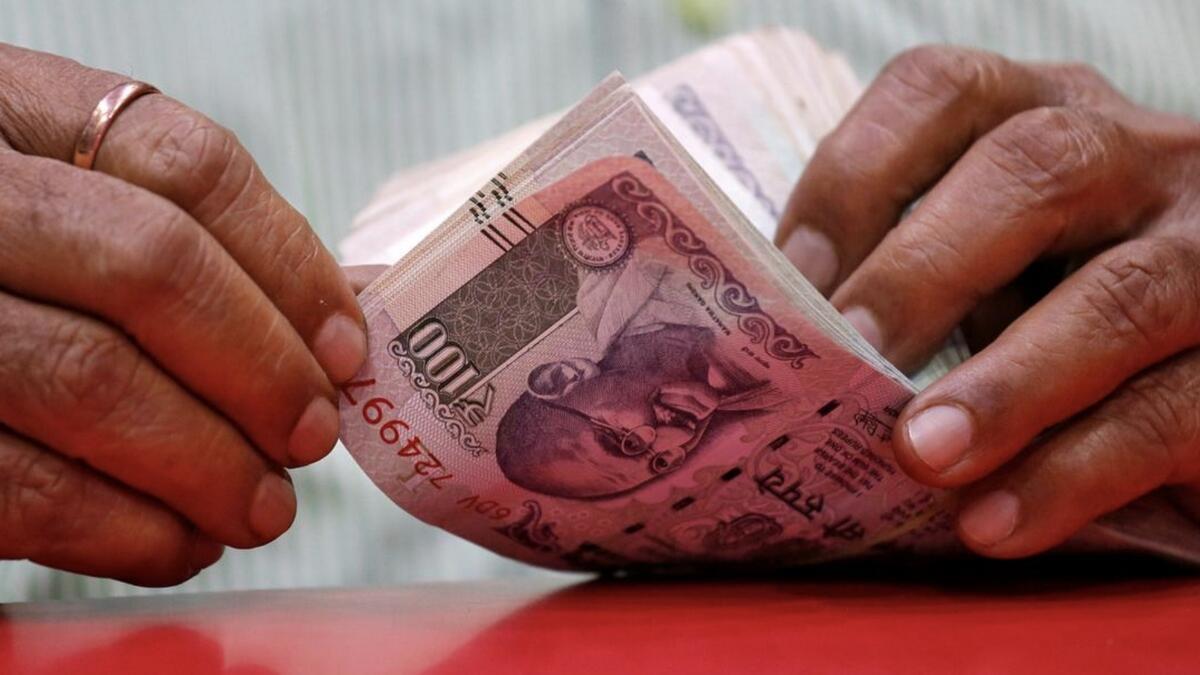
Indian Rupee May Hit 26 To The UAE Dirham As RBI Loosens Grip
The rupee has plunged to record lows in recent weeks, touching 23.689 per dirham or 85.97 to the US dollar, spurring speculation about the RBI loosening its tight grip on the currency under its new Governor Sanjay Malhotra. Under Malhotra's predecessor, the currency was effectively fixed to a crawling peg against the dollar.
On January 10, the rupee hit a record low of 86.04, closing at 85.9728 against the dollar, according to Bloomberg data. Persistent foreign institutional investor (FII) outflows, strong dollar demand from oil importers, a surge in Brent crude prices, and rising US Treasury yields have all contributed to the currency's decline.
Stay up to date with the latest news. Follow KT on WhatsApp Channels.
A steeper depreciation could present challenges for India's import-heavy economy, especially with higher oil prices. However, experts argue that in the long run, a weaker rupee could help balance trade dynamics and provide a boost to the country's fledgling export economy.
A weaker rupee may benefit Indian expatriates sending remittances home, as they would receive more rupees for their foreign earnings. While it could provide a temporary cushion for household incomes in India, the potential weakening of the rupee to 95 against the dollar carries significant implications for the Indian economy.
Gavekal Research analysts Udith Sikand and Tom Miller expect a larger depreciation, bringing the rupee to 95 this year. They also believe that the monetary authority faces the challenge of lowering interest rates without triggering a more significant currency decline.
In their report, Sikand and Miller suggested a depreciation of up to 10 per cent could occur as the RBI adopts a more flexible exchange rate regime. While a weaker rupee might initially strain the economy, analysts believe it could ultimately aid India's export sector by correcting an overvalued exchange rate.
Analysts noted that since late 2022, the RBI has tried to suppress currency volatility by controlling the rupee's exchange rate with the dollar. This brought stability via a rapid buildup of foreign-exchange reserves, which rose to an all-time high of $704.89 in late September 2024. However, amid the current sharp depreciation of the rupee, reserves have fallen by about $70 billion.
Monetary experts said a shift towards a more market-driven approach could lead to increased volatility in the rupee's exchange rate. While this may allow for adjustments in response to economic fundamentals, it may also create uncertainty for businesses and investors.
Allowing the rupee to depreciate further may have mixed implications for inflation and economic growth. On one hand, a weaker rupee could make exports more competitive, potentially boosting growth. On the other hand, it could exacerbate inflationary pressures, particularly for imported goods, they pointed out.
The RBI's foreign exchange reserves have been a crucial buffer against currency fluctuations. However, a decline in reserves due to intervention or capital outflows could limit the RBI's ability to stabilise the rupee in the face of market pressures, currency experts argued.
A weaker rupee would increase the cost of imports, particularly crude oil, which could drive inflation higher. This would pose challenges for the RBI in balancing growth and inflation control, analysts said.
A depreciating currency could enhance the competitiveness of Indian goods in global markets, potentially boosting exports. However, the benefits may be offset by rising input costs, especially for industries reliant on imported raw materials.
However, currency depreciation can impact investor sentiment, leading to increased volatility in equity and debt markets. This could deter foreign direct investment and affect overall economic stability.

Legal Disclaimer:
MENAFN provides the
information “as is” without warranty of any kind. We do not accept
any responsibility or liability for the accuracy, content, images,
videos, licenses, completeness, legality, or reliability of the information
contained in this article. If you have any complaints or copyright
issues related to this article, kindly contact the provider above.


















Comments
No comment